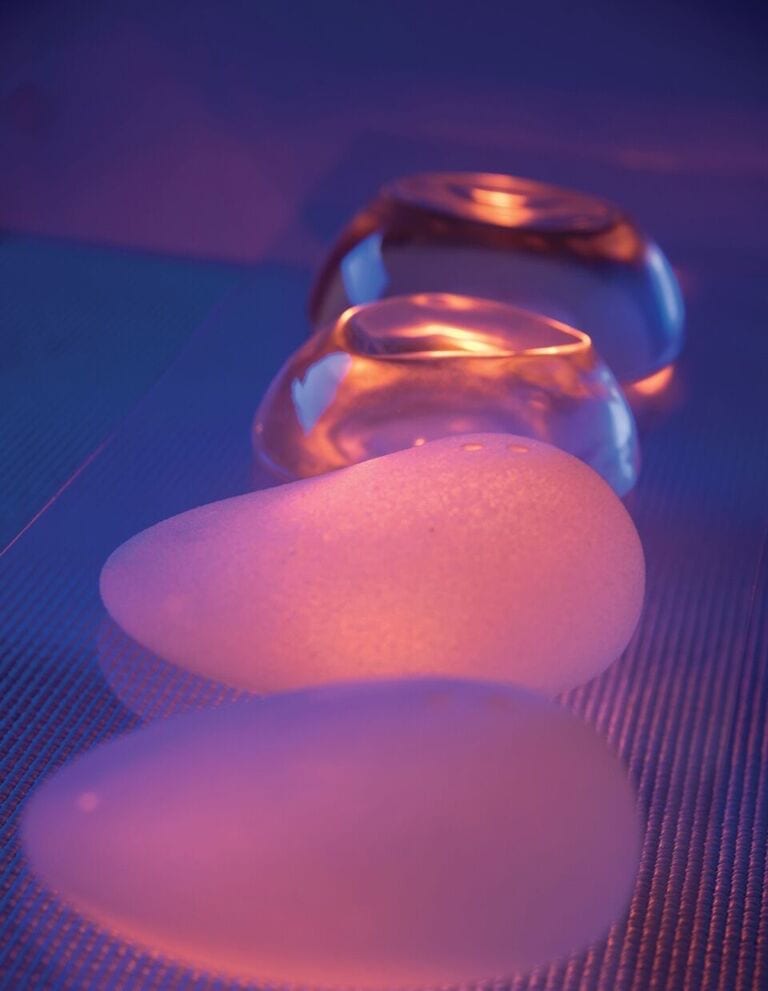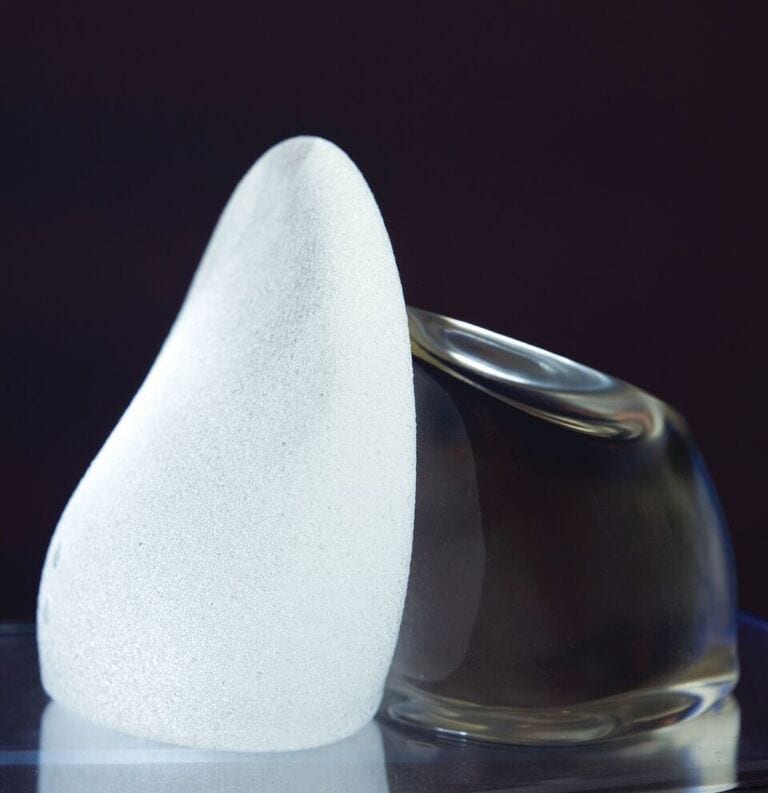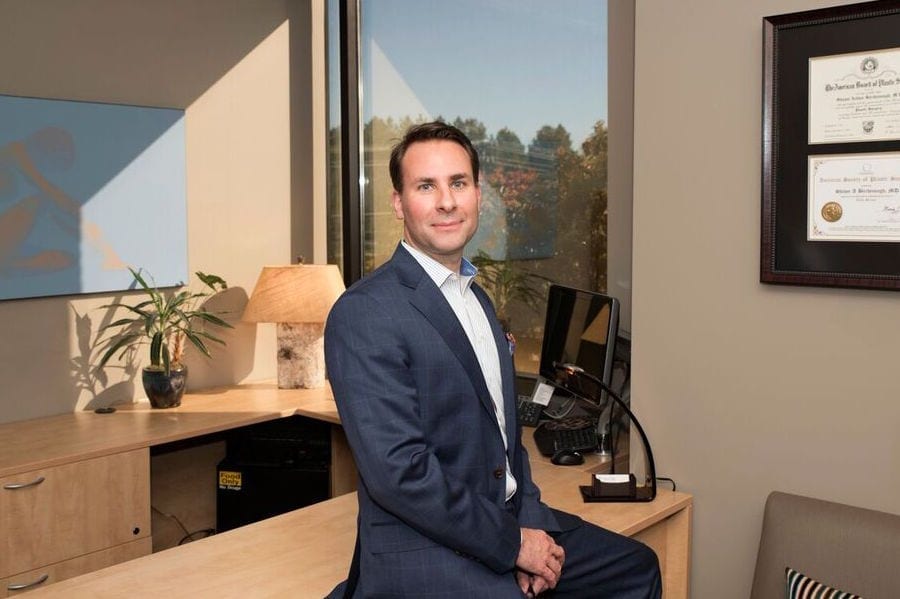Women who underwent breast augmentation may need additional surgeries later
Photographs by Jay Vaughan
Barbara Cardais just wanted to feel better in her clothes. She needed a boost of self-esteem. So in October, the vivacious 59-year-old had breast implant surgery — for the second time.
Cardais is not alone in seeking revision breast surgery. For women who have had breast implant surgery — also called breast augmentation — changes can occur over time to both the woman and the implants, so additional surgeries may be necessary. For Cardais, scar tissue had slowly formed and hardened around one of her implants from the initial surgery about 15 years earlier. About two years ago, she decided to have her implants removed.
“Breast implants don’t last forever, so when one of them needed to be replaced, I decided to take them both out,” Cardais said.
“But then I never really felt good in clothes, so I gave it a lot of thought and decided to put them back in,” she said. “I didn’t want to be bigger, but just back to what I had.”
The procedure gave her more self-confidence. “I just felt a little bit more whole,” Cardais said. “I’m very youthful, and now I feel good from top to bottom.”
A woman’s age is a significant factor

Samples of silicone breast implants with two cohesive silicone gel versions in the foreground.
Breast implant surgery is still the most common plastic surgery procedure performed. More than two-thirds of women who get implants will have the surgery after age 30. However, of the five million women in the U.S. with breast implants, half of them have implants that are at least nine years old.
Dr. Shawn Birchenough is a board certified plastic surgeon who specializes in breast implant surgery from his offices in Spartanburg and Greer, S.C. He also performs revision breast surgery to correct issues from previous breast implant surgeries.
“Frequently, I’m asked by patients, ‘How long will my breast implants last?’” Dr. Birchenough said. “It’s only fairly recently that plastic surgeons have been able to answer this question with some degree of confidence.”
A number of variables determine the longevity of breast implants; however, the U.S. Food and Drug Administration did long-term studies and found that 20 percent to 40 percent of women needed re-operation within eight to 10 years after the initial augmentation surgery.
A patient’s age when she gets her first breast implants can be a significant factor in determining when revision surgery may be needed.
“If you are 20 years old and get breast implants, then have children in your late 20s, you may want to have some changes to your implants in your 30s,” Birchenough said.
“If you’re past having children and have your first set of implants, you may be able to go a lot longer if you don’t gain a lot of weight. Because for women, there are some pretty significant changes around childbirth. The breasts change a lot around pregnancy.”
Along with changes that come with age, pregnancies and weight differences, breast implants can also alter the shape of the breast over time, resulting in a variety of issues, Dr. Birchenough said.
The implants can fall into the wrong position or slide around. They can become firmer as the scar tissue gets thicker, resulting in pain or a pulling sensation. The breast can start to sag over the implant, putting the nipple in the wrong position. One or both implants can slowly get higher on your chest, causing the nipple to fall lower. Or the implant can deflate or leak or start to ripple under the skin.
Changes in materials and methods
Through the decades, a number of implant fill materials and densities have evolved. Currently, there are more than 1,000 different implants for plastic surgeons to choose from to ensure an appropriate size, shape and contour.
Silicone gel implants (silicone shell with silicone gel filling) were the first type of implant, used from the 1960s to the 1990s. They were restricted by the FDA from 1992-2006, to be used in clinical trials only. It was during this time that saline implants (a silicone shell filled with salt water) became much more prevalent, at least in the U.S.

When comparing silicone implants, the cohesive gel type (left) retains its more natural shape than the standard silicone gel implant (right).
Saline implants are still available. “There’s always a trade-off of how it feels and how long it lasts,” Dr. Birchenough said.
But in the past five to 10 years, new methods, materials and implants can help improve outcomes for patients requiring revision.
Released for general use in the U.S. in 2012, cohesive silicone gel implants are the fifth generation of implant technology. These “gummy bear” implants have initially been shown to last longer than the previous generations.
“However, more time is needed to fully study the longitudinal data on these highly cohesive implants, including how long they will last and what long-term problems we may have with them,” Dr. Birchenough said.
When using cohesive silicone gel implants, plastic surgeons had to change their technique and be more precise in positioning the implants.
“Orientation is critical and technically more demanding to keep them in place,” Dr. Birchenough said. “These implants look more naturally shaped, and attitudes are changing to a more natural look.”
Educating patients
Breast implant surgery is much more nuanced than “making breasts bigger,” Dr. Birchenough said. “Many patients come in with an idea of how big they want to be.”
However, he spends time educating patients about other aspects of breast aesthetics, including the position of the breast on the chest, the location of the nipple with respect to the breast, the volume of the breast tissue and where breast tissue is lacking, and the shape or contour of the breast as viewed from the side.
“I then discuss the unique differences of these parameters — position, nipple, volume and contour — and which ones can be modified with which type of breast surgery, and how an implant can affect those aspects,” he said.
Revision breast surgery adds other elements of complexity that need to be taken into account, such as the decision to reposition, remove or exchange the implants.
“It is a complex discussion that I try to simplify as much as possible to help the patient make an informed, educated decision about how to proceed,” Dr. Birchenough said.
Fixing issues
Gina, who asked that her last name not be published, is another of Dr. Birchenough’s patients who underwent revision surgery to correct issues she says were caused by a different plastic surgeon.
After rapidly losing 50 pounds, Gina said she had sagging, loose skin and needed a tummy tuck and a breast lift with implants.
From August 2012 to June 2014, Gina underwent three surgeries in an attempt to tighten her skin back to normal.
“There’s always a risk with surgery,” Gina said. But according to her, the operations went horribly wrong and left her devastated with a punctured implant, nerve damage and depression.
She was referred to Dr. Birchenough.
“He is just phenomenal,” Gina said. “He really knows not only anatomy, but understands the importance of building you up from the inside so you look healthy and well — not only aesthetically, but emotionally. Now overall, things are wonderful.”
Cardais agreed. “I just feel very young and youthful for my age right now, and for my lifestyle, it works for me. Because I’m a middle-aged woman, I didn’t want my breasts to be all perky and obvious. I just wanted a natural look, and that’s what we got.
“I went to Mexico in January. It was the first time I put a bathing suit on in a couple of years because it felt so good,” Cardais said.

